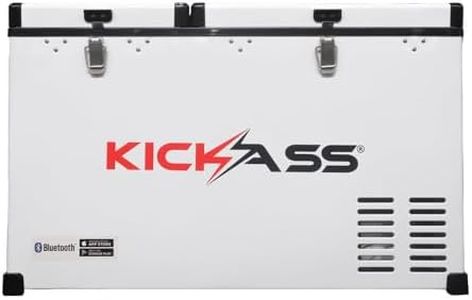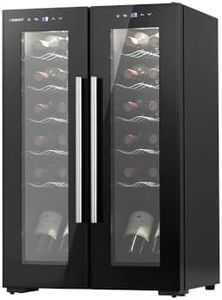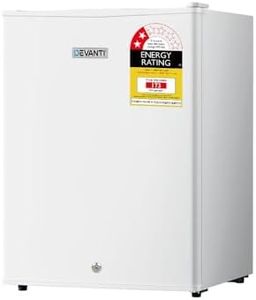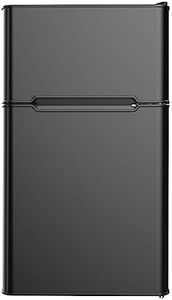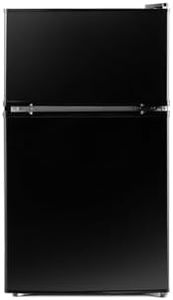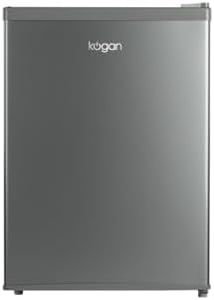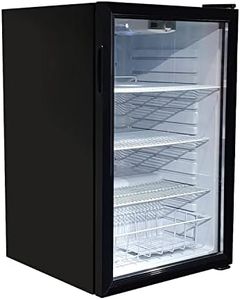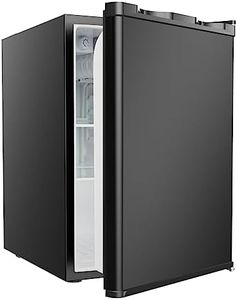We Use CookiesWe use cookies to enhance the security, performance,
functionality and for analytical and promotional activities. By continuing to browse this site you
are agreeing to our privacy policy
10 Best Commercial Refrigerators
From leading brands and best sellers available on the web.Buying Guide for the Best Commercial Refrigerators
Choosing the right commercial refrigerator is crucial for any business that deals with food or beverages. The type of refrigerator you pick affects cooling performance, energy consumption, storage organization, and overall food safety. Before deciding, think about the amount and types of products you'll store, the space available in your premises, and how often you'll access the refrigerator. Knowing your needs will help you focus on the features that matter most and ensure a good fit for your business operations.CapacityCapacity refers to how much a refrigerator can hold, usually measured in cubic feet or liters. This spec is important because it determines if you’ll have enough room to store everything you need. Commercial refrigerators come in a range of sizes from compact units for tight spaces to large walk-in models for high-volume operations. To choose the right capacity, consider your typical storage needs, peak usage times, and available floor space. If you often run out of space or have to overfill shelves, go bigger; if you have lots of empty shelves, a smaller capacity could save energy and cost.
Type (Upright, Undercounter, Display, Walk-in)The type of refrigerator defines its shape, design, and typical use. Upright models are tall and save floor space, undercounter units fit below work surfaces, display units have glass doors for customer access, and walk-ins offer very large storage spaces for kitchens with high turnover. The right type depends on your business model and kitchen layout: use uprights for back-of-house storage, undercounters for prep areas, display units for selling products visibly, and walk-ins for bulk storage. Think about ease of access and workflow when deciding.
Temperature RangeThe temperature range tells you how cold the refrigerator can get, which is vital for food safety and product longevity. Most commercial refrigerators have adjustable settings, but the specific range can vary by model. For basic food storage, a range from about 33°F to 41°F (1°C to 5°C) is adequate, but some items, like certain dairy or medical products, may need precise temperatures. Check your specific storage requirements—if you need to store items at specific temperatures, make sure the unit can consistently deliver those conditions.
Number and Type of DoorsDoors impact both ease of access and energy efficiency. Commercial refrigerators can have one, two, or several doors, and they might be solid or glass. More doors help with organization and can make it easier for staff to grab items quickly without letting out too much cold air. Glass doors are ideal for display and frequent access but may not insulate as well as solid doors. Choose the number and style of doors based on how many people will use the refrigerator, whether you want to display products, and your storage needs.
Shelving ConfigurationShelving configuration describes the number and type of shelves inside the refrigerator, as well as how adjustable they are. Adjustable shelves let you fit taller items and reorganize as your needs change. Some models offer reinforced shelves for heavy items or pull-out racks for easier access. Consider what kinds of products you store—if you have lots of large or odd-shaped items, more flexibility in shelving is helpful. For standard items, fixed shelves may be fine and simpler to clean.
Compressor LocationThe compressor is the noisy, heat-producing part of a refrigerator that helps it cool. It can be located on the top, bottom, or side of the unit. Top-mounted compressors are less likely to get clogged by kitchen debris and may be a little cooler, making them great for hot kitchens. Bottom-mounted units are easier to access for cleaning and maintenance, and they may be more accessible for staff, but they tend to draw in more dust. Choose compressor placement based on your kitchen environment and preferences for cleaning and maintenance.
Energy EfficiencyEnergy efficiency measures how much electricity the refrigerator uses to keep your goods cold. This is important because commercial refrigerators run frequently, so consumption can add up over time. Some models are designed to use less power by using better insulation or more efficient compressors. Efficiency ratings or certifications help you compare models. If energy usage is a concern—such as in 24/7 operations—choose a unit that is certified for efficiency, which will reduce operating costs and environmental impact.



